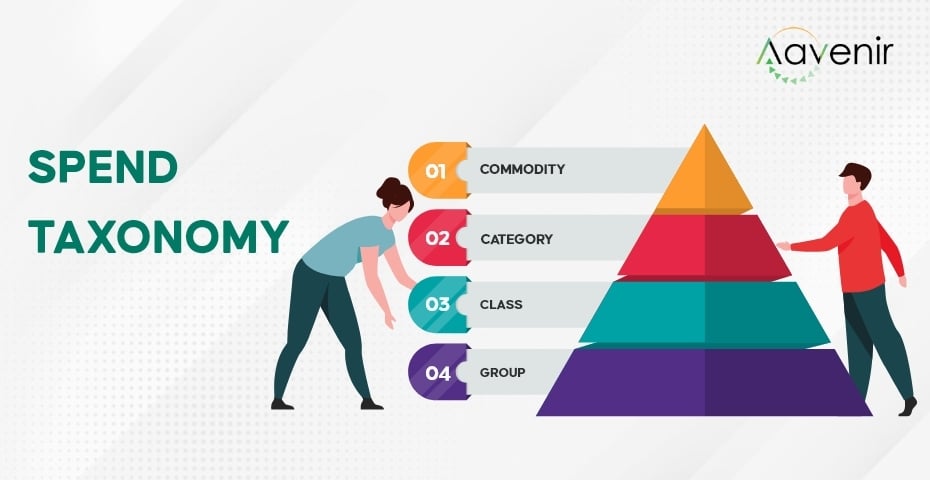What is Spend Taxonomy?- Definition
Spend taxonomy is the categorical hierarchy of spend and sourcing groups, from general to specific. A custom taxonomy is vital to procurement and sourcing teams to truly understand their spending. They can also build further categories they want and need to see, in order to make decisions about their organization’s spend.

Understanding Spend Taxonomy
Spend taxonomy is vital to clients truly understanding their spending. Customers build the categories they want and need to see to make decisions about their organization’s spending.
To understand why spend taxonomies are so important, it helps to go back to the three main phases of spend analysis:
- Data Acquisition – gathering all of an organization’s spent data from whatever sources contain it.
- Data Processing – cleansing, classifying, and enriching the data.
- Reporting & Analysis – extracting the data and insights that allow you to make decisions about your spending.
Spend Taxonomies are critical in the Data Processing step when line items of spend are categorized into the custom taxonomy. Without a robust taxonomy, spend classification becomes weak, and the resulting reporting and analysis won’t offer much insight – if any – into spending.
How should you go about building a spend classification taxonomy?
At a high level, building a spend taxonomy means setting up the categories and sub-categories that you’ll use to classify your spend data. For example, you might have a class of “Business Services,” with a sub-category of “Marketing.” Within the Marketing sub-category, you could have additional sub-categories for “Advertising,” “Creative,” and “Market Research.” And those sub-categories might break down into even more detail – like print and online advertising, for example. Taxonomies can vary significantly by industry, and your taxonomy must reflect the goods and services relevant to your organization.
As you are building your taxonomy, consider these best practices your taxonomy must reflect that have worked time and again for our clients:
1. Set objectives
What do you want to get out of your reporting? What answers are you searching for? This will guide how your taxonomy is shaped.
2. Align with existing internal reports
The way spending is categorized within those reports is often a good starting point for your taxonomy. For example, suppose there is a precious classification – like a report that you turn to repeatedly – be sure to reflect that in your taxonomy. You might also recognize structures that are working poorly. For example, you can correct or abandon those in your new taxonomy.
3. Keep upcoming initiatives in mind
Think not only about your organization’s current needs but about its potential future needs. For example, are you likely to need to open a new office or remodel an older office? Then build in office equipment and furniture categories, even if you haven’t spent much there in the past.
4. Find the sweet spot for detail
Sometimes we see data with very little detail. You can’t classify those line items into meaningful sub-categories if you don’t honestly know what that spend was for. And inversely, if you have a lot of spend data detail – do you need to be that granular? Are you going to source office chairs separately from office desks, or will you source office furniture as a whole?
Explore Additional Resources To Know More




